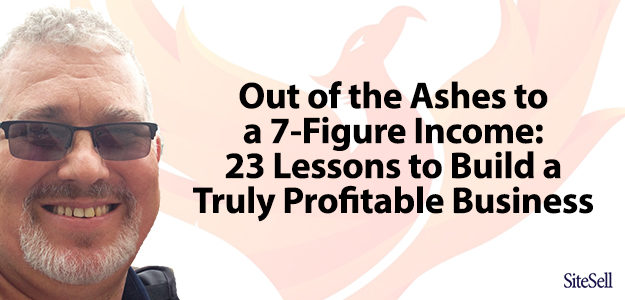
Build a profitable business fast? I was very short on time, I was stressed out, had tons of bills to pay, and I had 3 months to sink or swim.Steve Kazella from cell-tower-leases.com
What would you do? What could you do? There’s only one choice…
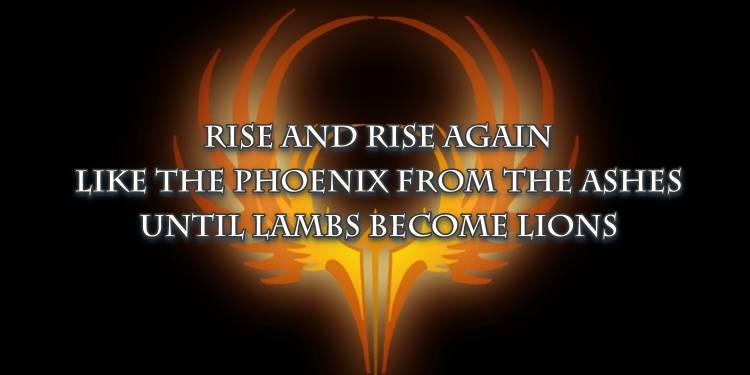
The Ashes
After the stock market crash in 2008, Steve Kazella was laid off. The only assets he had were…
- 3 months of unemployment benefits (to support a family of four)
- a friend and colleague who had also lost his income, and
- specialized knowledge about cell tower leases.
So Steve and his friend rolled up their sleeves and started a company. They had nothing except their own time and sweat equity.
They poured that, plus a ton of determination, into building two SBI! businesses for cell tower landlords.
The Phoenix Rises
In 2010 — just two years later — they were featured in the New York Times.
A little later, as Steve puts it:
things just went gangbusters.Steve Kazella
Solopreneurial Online Success Is as Rare as a Phoenix
You read about success stories like this all the time. They are rare, though, especially online, where the competition is tough due to the low-cost barrier to entry.
Aside from using Solo Build It!, which has been well-documented to increase your chances to build a profitable business, what did Steve do that you could do?
Let’s hear from this successful entrepreneur about how to build a profitable business online. He generously shares lessons from his “out of the ashes” story.
1. Steve, you describe starting your online business as “out of the ashes.” Can you tell us more about that?
Our company was started from the ashes of my previous life. I was working from home as a salaried recruiter, but then I was laid off. We were down to one car, which my wife used to commute to work. I had just 3 months of unemployment benefits coming in.
And following the stock market crash of 2008, my soon-to-be business partner, who leased and built towers for Verizon, no longer received any consulting work from them.
We had — literally — nothing to lose, except, as my son said, “your dignity.”

So we rolled the dice and started a company with no capital except the time and sweat we put into building our first, then our second, SBI! business for cell tower landlords.
It was hard work, but about 2 months later we got our first client, and our business has grown steadily ever since.
We made the New York Times in 2010. They linked to our website and gave us some serious credibility. Once that happened, things just went gangbusters!
2. You’ve created two SBI! sites simultaneously, cell-tower-leases.com and cell-phone-towers.com, with similar content. What was the strategy behind that?
The strategy. Hmmm. I wish I could tell you that we had an elaborate business plan, but the two sites were born out of trial and error, not really out of a specific strategy.
My first mistake was that I did not watch the SBI! Action Guide videos (which teaches you step-by-step how to build a profitable business) enough times.
I was very short on time, I was stressed out, had tons of bills to pay, and I had 3 months to sink or swim. So I just started building content pages, drinking lots of coffee and building more content pages. I kept at it until my first website had a strong foundation of valuable content.
I initially built the cell-phone-towers site. It turned out to be a bit too wide a niche — dealing with all cell towers. Our business “plan” was to lock cell tower landlords and rooftop owners into management contracts, to sign land management contracts and to market properties where we suspected a cell tower was needed.
Once that first website started attracting some traffic, we submitted the first several contact forms and made the first dozen phone calls. And suddenly, once we had established contact, I realized people weren’t looking for a management company. They were looking for answers to their leasing questions.
The lightbulb in my head went off.
I realized that there was a need in the marketplace to provide answers and solutions for the 300,000+ wireless landlords in the USA.
And poof, that’s how we became a lease consulting company.
I decided to leave the initial site up, rewrite and refocus all the existing pages with a new direction and add more content. Then I built our second site. That site focused on providing help for landlords with their cell tower lease agreements.
I ended up creating about 70 content pages in all between the 2 sites. I’m glad I left both of them up — they’re actually both doing great.
COMMENTS: Steve shares some strong business lessons with other solopreneurs here. First, he admits his mistake: he jumped into building his website without paying enough attention to the SBI! Action Guide.
Starting too fast, on a hunch, is the most common reason for solopreneurial online failure. SBI! puts heavy emphasis on doing the right preparation for building a profitable business before starting.
Steve was under pressure and skipped the research and preparation steps. Time and again, SBI! members tell us that taking their time delivered an all-important foundation. When done correctly, it’s not only the difference between success and failure, it’s like having a permanent tailwind pushing you to greater success.
In the world of building solopreneur businesses, the race goes to the tortoise.
While Steve was remiss in his preparation, he recognized his mistake and was prepared to learn from it. He saved his business because he listened to his potential customers, heard what they really needed — rather than what he thought they would need — and adjusted his business accordingly.
We call this the #1 lifeline to success.
3. Tell us about your philosophy regarding content. How do you know what your prospective customers are looking for? Where does this information come from?
Our content was easy to write. To be completely honest, the keyword numbers from the SBI! Brainstormer were not really that awesome for my industry. There were no juicy keywords at all.
But the SBI! Action Guide foresaw that possibility. It tells you not to be too hung-up on the numbers, to let human judgment rule. I didn’t have too much time to ponder, we just did what we thought was necessary to cover all our bases in order to build a profitable business.
The Brainstorm It! tool spares the solopreneur the time-consuming, laborious process of developing and researching hundreds of keywords (topics and subtopics) that become the website’s theme.
But — computers cannot think. They collect and report data with incredible efficiency. But they cannot ask themselves, “Does this make sense for my niche?”
So, at all times, “be like Steve!” Of course, do keyword research. And then, use your knowledge and understanding of your niche, and your passion for the subject, to make the final calls.
“Do not become number-bound” is the advice we give SBI! members when they use Brainstorm It!, SBI!’s advanced keyword brainstorming tool. (This tool does more than keyword research – more info here).
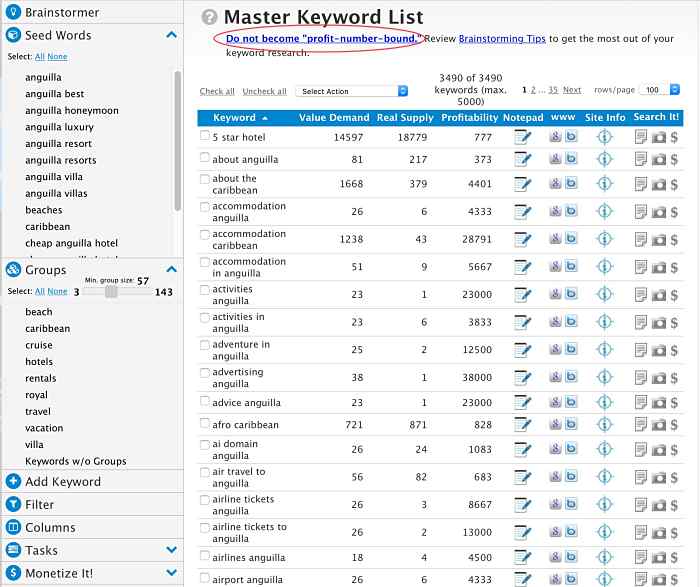
We are passionate about what we do. We wanted to help people get a fair deal in the David and Goliath struggle of “Tiny Cell Tower Landlord vs. Big Ugly Wall Street Funded Cell Tower Company.” And our passion made it easy to write about.
- Brain: niche knowledge.
- Attitude: passion creates a positive attitude that gets you through setbacks and enables you to “work ‘til you win.”
- Motivation: without determination, you’ll quit at the first setback (and you can count on at least one of those).
Both my partner Kevin and I had many years of cell tower industry experience, which translated well into our new direction. There are about 300,000+ cell site landlords in the USA, and there are always leases to be negotiated or towers being upgraded. That is the battlefield where we compete for visitors.
We were well positioned to catch the huge growth with 4G expansion, as the Smartphone craze has been the driving force behind the boom in wireless network expansion for the past several years.
Why does this help? Because every cell site has a lease. And when a landlord has a question, if they are searching for information online they will inevitably bump into one of our content pages.
There are 5 major cellular carriers and 3 major cell tower development and management companies in the USA. There are about a dozen different reasons landlords and property owners search for help regarding cell tower leases and rooftop cell site leases.

So we just wrote about that on both sites, one page at a time. And we created C2 pages so people could ask us their questions direct.
Our 1,000+ C2 content “Ask the Expert” pages have generated countless customers for us.
C2 enables your visitors to write a new page on your site, complete with text and images. Other visitors can comment, so it becomes interactive.
It’s ideal for a Q&A section like Steve’s “Ask the Expert.” Rather than answering each question one-to-one (as you would do if someone contacted you by email), you answer it for every future website visitor who has a similar question.
The diversity of the questions asked and answered by you, and by other visitors, helps your site get found for more and more “long-tail” keywords. It establishes you as an expert between-the-lines.
In short, C2 helps you get customers directly — because they love the quality of your answers, and then hire you — and indirectly — because more and more people with similar needs find you.
4. After you provide all this valuable and free information, how do you “upgrade” people from being free content seekers to paying customers?
When Ken, SiteSell’s founder, talks about “warm, ready to buy visitors who are pre-sold” he isn’t kidding. I never have to hard-sell anybody, I just sign them up.
Well, New York City landlords are a special breed. They need a little extra nudging — but even so, we get a lot of them too!

Our C2 content pages do most of the heavy lifting. People spend hours there reading questions and answers posted by us and others.
I suppose that somebody possibly could figure out answers to every question they have if they read every word, but 99% of them realize that they don’t have the time and that this is way out of their league. So they hire us to be their advocates. At least half of the customers we have say something like “okay, so how do we hire you guys?”
5. You primarily monetize via your consulting services. Do you have, or plan to introduce, any other monetization methods as you build a profitable business?
We also monetize via referrals for some services, which is about 15% of our business. We are working on one right now, but it’s premature to write about. We’re always thinking of ways to develop our services.
6. How long did it take to start earning an income from your sites? Is it a full-time income (replaces a job) or a part-time income?
During our first 3 years we worked the business as a part-time venture. I worked as a limo driver, contract recruiter, and even as a bail bondsman before it became a full-time gig.
We started this business at the time of the Wall Street downturn (Lehman Brothers, etc.). It was a lot of hard work, and we had to get over a few ups and downs until the momentum really kicked in.
By the 4th year — somewhere in 2012 — the SBI! websites we had were supporting my family and my partner’s family. So it became a full-time “job” for both of us. I guess if I had been a true “solopreneur” working by myself to build a profitable business it could have happened quicker. But working with a business partner has huge benefits.
As the business grows, they may add a part-time employee, maybe even a full-time one. At some point, though, many have to make an important decision…
“Do I K-I-S-S or do I add employees and grow this really big?”
Many elect to remain solopreneurs, and for a really great reason…
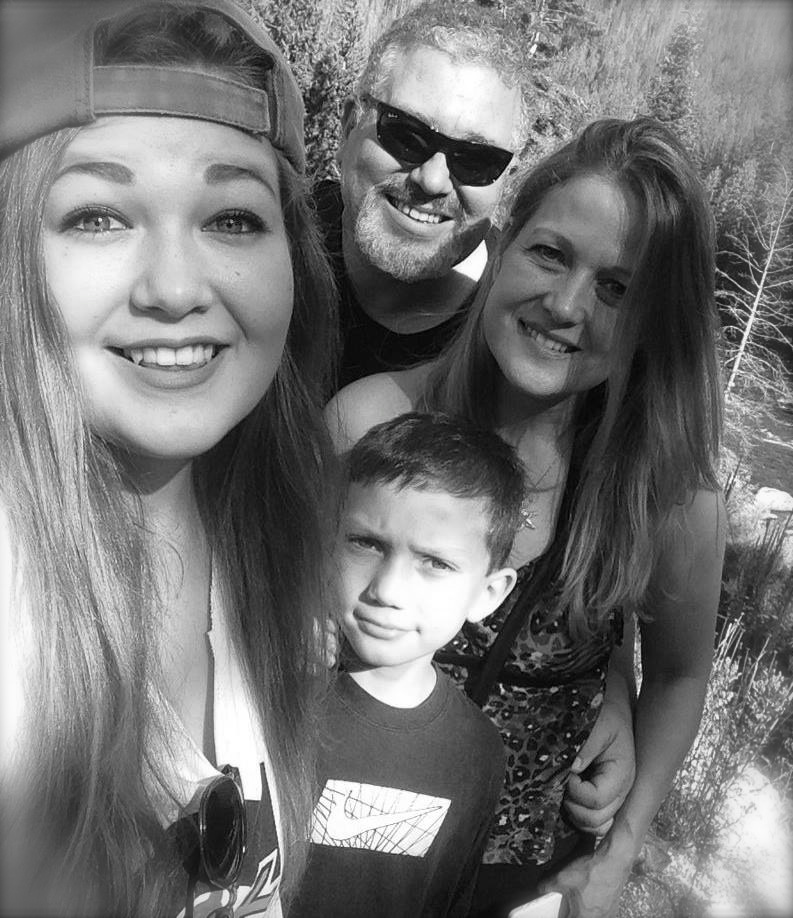
Steve says: “Without SBI! we could never live here.”
OK, OK, I guess that’s our takeaway and not yours. We just wanted to take the opportunity to let you know what drives us… you.
7. You mention “Principals” and “Partners” on your contact page. How big is your team? Do you also have employees or do you work solely with contractors and partners?
There are only 2 of us, with no employees, but we look a lot larger online. I am the face of the company, and we keep my partner chained in the back room utility closet and only bring him out for customers to see when we need an 800 pound gorilla to bang a square peg into a round hole.
Occasionally we’ve hired a virtual receptionist company to answer call overflow at times when both of us were on projects, so callers could speak with a live human when they called.
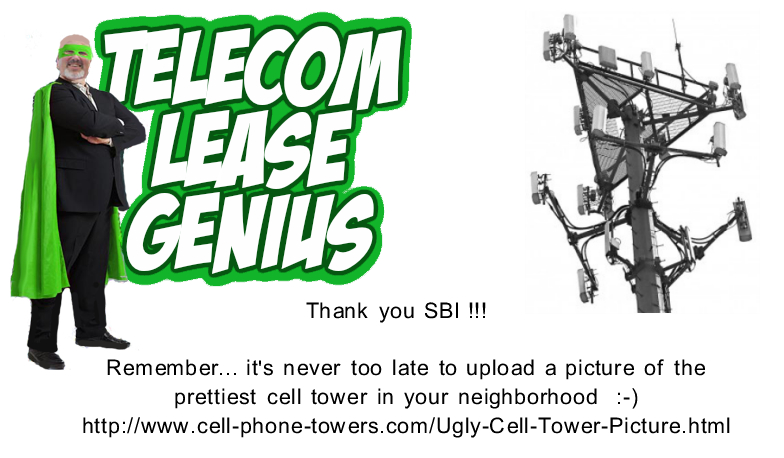
Steve’s humor, what we call “voice,” gives him an edge over his competition in the rather boring world of cell tower leases. Yes, that’s him in the picture!
8. You’ve become the top consulting firm in the USA for cell tower landlords. What do you see as the major contributors to this success?
Without hesitation I can tell you that our SBI! sites were the springboard to our success in building a profitable business. I’ve studied our competitors and I know from feedback we get from customers who shopped around before they hired us, we are not the cheapest from a pricing standpoint. Our website is what sells them.
We also integrated some dry humor into the sites, making us “human” and not corporate-sounding at all. I chose to use my own web template and we have purposely decided not to make it look flashy or ultra cool or slick. We want it to look like two real people built the site. That’s just our opinion, but it works for us.
Recently we even had a side discussion on a very popular blog where there was a thread about cell tower leasing values, and a blogger posted a link to one of our pages. Here’s the conversation:
— This website, although aesthetically horrifying, has great information and is a great resource for this kind of thing.
— You’d think that someone making an informative, up to date (2015-ish) website, would understand the importance of not wanting it to look like something from 1999. Am I right?
—- Maybe not, sometimes ugly websites are associated with more credibility, as people tend to distrust the information found in slick marketing efforts.
—– Have you seen Berkshire Hathaway’s website?
So essentially we were called ugly, but they pointed out we had great content. Then they compared us to Warren Buffett’s website. LOL!!!
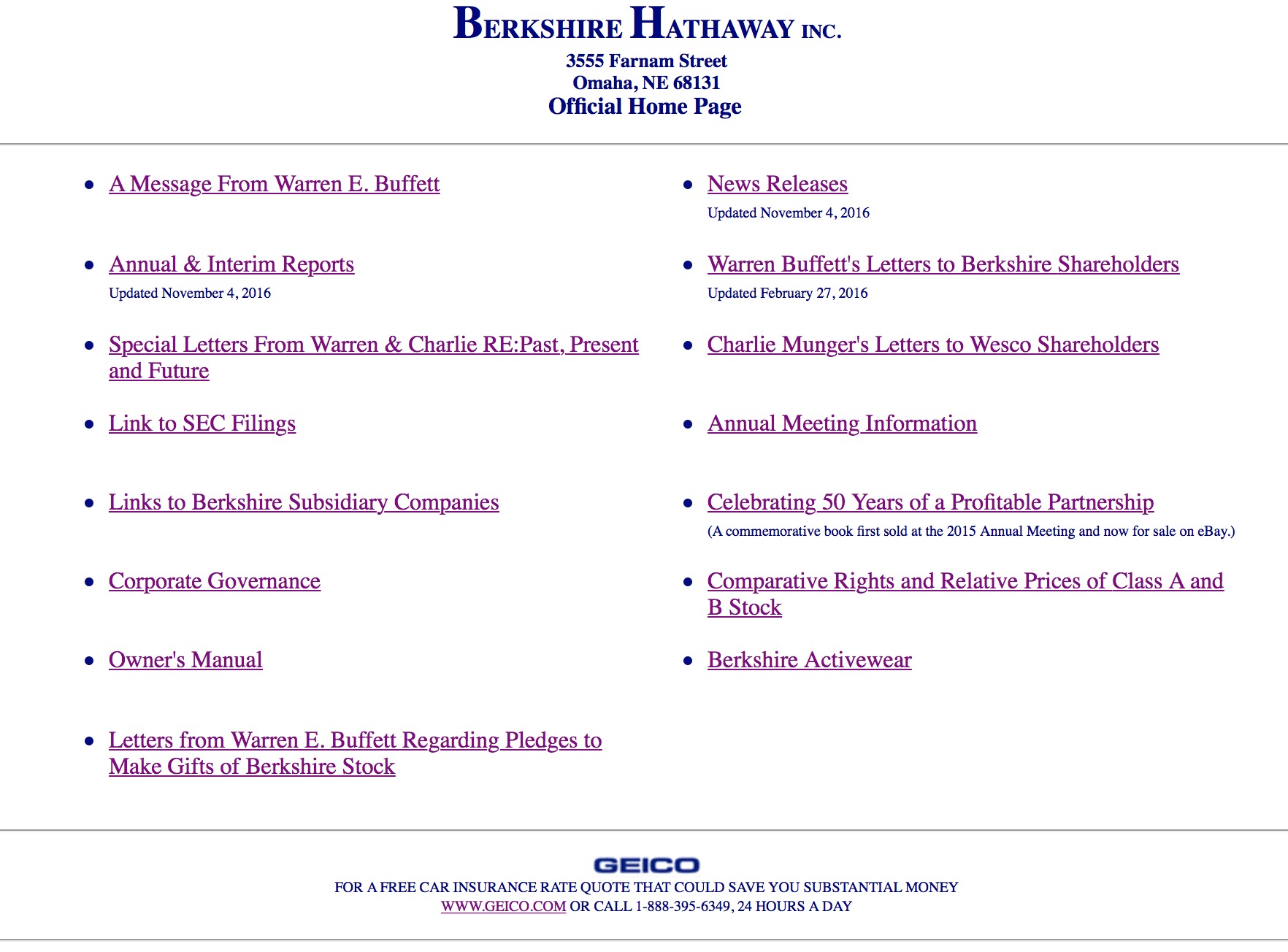
Yes, we see the resemblance. 🙂 See Screenshot of Steve’s site below.
Your design/look needs to be good enough to make you look credible and to get your visitors to hang around until they read your opening headline (5 seconds). Your headline must be good enough to get them to read your first paragraph (30 seconds). And that must be good enough to get them to understand your “Valuable PREselling Proposition” (“VPP”).
At that point, if you’ve established the start of your voice and if the VPP is of value to them, they aren’t even seeing your design anymore.
Why? Because search visitors are highly task-focused.
Steve is a tad on the other side of the millennium, though…

But he makes a powerful point. Phenomenal design may please your ego, but your visitor is hardly looking. S/he is task-focused. For that reason, outstanding content, presented in a unique voice, beats slick design plus mediocre content any time, hands-down!
“Content is king” is truer today than ever. Google and the other search engines are getting better and better at delivering what people want: the best, most relevant results for their search.
In some industries it may even be an advantage to have a less slick-looking website. It may give you more credibility, as opposed to the large, corporate sites. You have probably noticed how “a look” comes around every 5-10 years or so. And how everyone promptly rushes to that look.
The most important thing? Don’t look “modern.” Look different and stand out. Don’t follow the “design-sheep” and “catch up” to everyone else. Instead?
Go DIFFERENT while still being sharp and able to support the credibility that your words build. Look and voice should be in sync.
Steve’s site is over-the-top outdated, more than we recommend. But it’s a shining testimony to the power of content and being different. And he was still able to build a profitable online business. A final point…
As archaic as Steve’s site looks, he has used SBI!’s “Mobilize It” module to make it mobile-friendly, nice and responsive.
Spoiler alert: Steve is (at the time of this writing) working on a new design. Soon he’ll wow his visitors with outstanding content and a sharper design. One thing’s for sure, though — his sites will never have that boring corporate style. Steve’s personality and humor shine through in his images and writing style — just take a look at this image!

9. What are your major priorities and business goals to build a profitable business for the next 12 months?
We are focused on working smarter, and increase our prices accordingly. We’re exploring new ways to monetize referrals and stay lean without adding employees or a bricks and mortar office.
Our goal is to have our first 7-figure year in 2017.
10. And finally… What do you enjoy most about being an online business owner? How has it changed you, your life, your family?
Being an online business owner has allowed me to put my kids on the school bus every day and be there when they get off the school bus. It has allowed my wife to stay home. Is that politically incorrect? Oh well. She’s happy about it.
Having my own online SBI! business allowed our family to be missionaries for 2 years. We could take our business with us, and it funded our trip.
It also allowed us to move to one of the most remote parts of the lower 48 states and live where the deer and the elk play. No antelopes here. It’s given us great flexibility with our family, and a great quality of life.
Here’s an excerpt from a customer (a widow for whom we negotiated a Verizon tower lease) who wrote me a thank-you card last week:
“I want to thank you and your partner for your help in this lengthy negotiation. I am so happy I had both of you in my corner. This is a life changer for me and I will keep you and your company in my prayers.”
That’s another huge benefit, knowing that we provide a service that makes a difference in people’s lives.
Steve ends his interview with a word of advice to solopreneurs…
“In our success a lot of competitors have tried to copy us and steal our content. We even had a guy follow us on Twitter and then all of a sudden he started a website with a very similar name to ours using a form of “Air-Wave.” He was trying to sound just like us.
We made the mistake of not trademarking our brand after the work started taking off, and we estimate that this oversight on our part cost us dozens of customers and well over $100K in lost revenue. That’s why it’s called school of hard knocks.”
- Search to make sure that you don’t violate anyone’s mark. SBI! covers how to do that in the preparation steps, well before you pick your domain name.
- Trademark your name at the first sign of success. While you technically/legally own your trademark as long as you use it, registering it scares others off due to your enhanced legal power.
Only do the second (if money is tight) when you see your business proving itself.
Big Picture Take Home Points To Build A Profitable Business
- You don’t need bags and bags of money, tons of equipment or a fancy office to build a profitable business. You need an idea, a proven process, a “can-do” attitude and lots of coffee. 😉 If you have a trustworthy business partner from the get go (as Steve did), all the better. But you can also do this on your own.
When solo, you don’t have time to do both, but you can add a key employee when you have the cash flow. Then develop your own product or service (i.e., if you want to magnify your business — the choice is all yours).
- Listen to your potential customers. Don’t rely on what you think your target audience needs. Instead, ask them. Listen carefully to what they say, and be prepared to change direction.
- Execute what your customers want. Many listen but don’t act. Steve not only made it easy for his potential customers to ask questions and give feedback, he turned it into User-Generated Content, which drove traffic while providing a valuable service. SBI!’s Content 2.0 module is a powerful — and free — module.
- Protect your business. As a minimum, discourage potential copycats by adding a copyright notice in your site’s footer. For a higher degree of protection, trademark your brand name.
- Never be in a position where someone else can set fire to
your life and reduce it to ashes. Build a profitable online business and you’ll be able to lead the life you want — a life of joy.
Questions about how to build a profitable business online?
Message one of our friendly Advisors right away
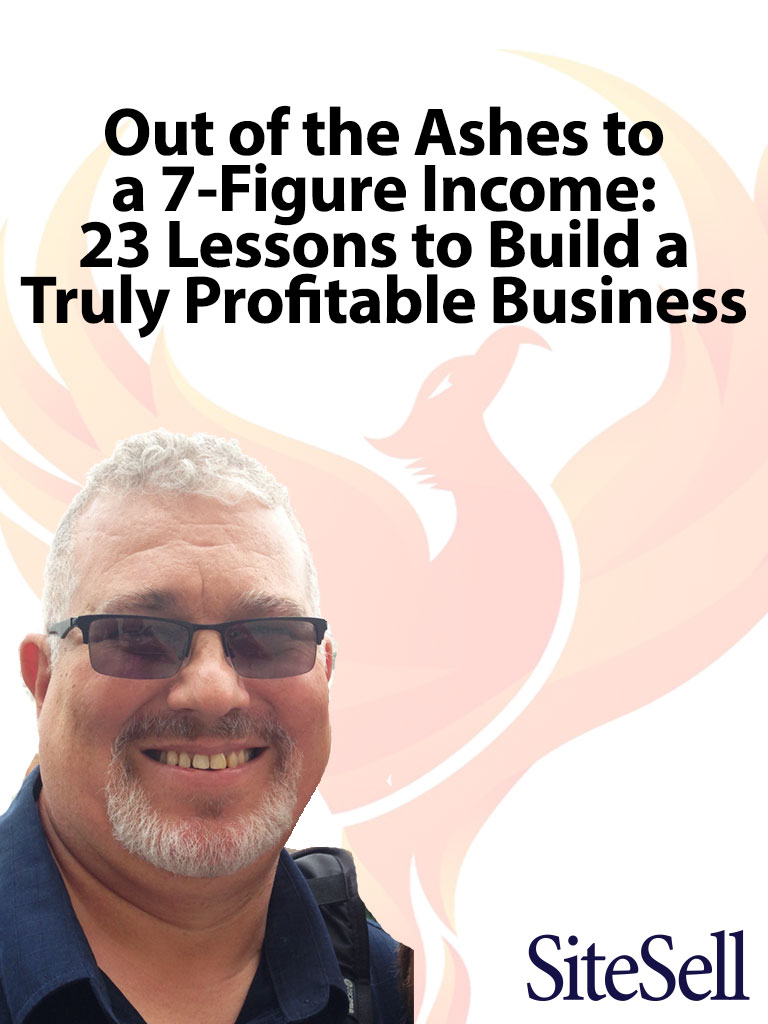
Latest posts by Margit Streifeneder (see all)
- From Zero to 1 Million Fans: A Community-Driven Success Story - October 16, 2025
- Six Figures on Her Terms: A Lifestyle Business Success Story - September 25, 2025
- From Sheds to Sales: A 20-Year Digital Product Success Story - September 11, 2025


